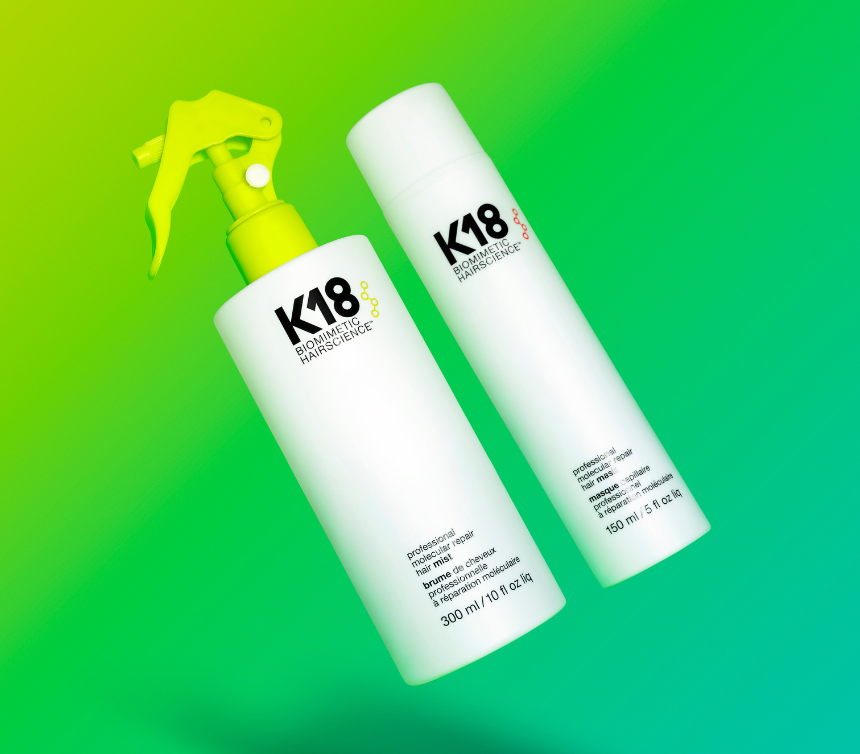Wait a test with prizes? Duh. We reward smarties around here.
MODULE ONE: SCIENCE BASICS
SCIENCE CLASS 01: where does hair strength come from?
When hair undergoes chemical processing or bleaching, the keratin chains running along the y-axis of hair break, and as a result, hair loses its resiliency. To restore strength and elasticity of damaged hair, you must repair breaks along both the x + y axis.
Key vocab: y-axis –the vertical part or length of the hair fiber where keratin chains run. Breaks in the y-axis cause hair to lose its strength and resiliency.
Get extra credit, read the full article here.
SCIENCE CLASS 02: the dynamic world of hair
Hair is a dynamic, constantly moving structure with 3 main layers: The cuticle, the cortex, and the medulla. The key to renewing hair damage is to reach the inner-most layer to repair broken polypeptide (keratin) chains. This is what’s responsible for hair’s core strength and elasticity.
Key vocab: polypeptide chains – keratin chains that make up the inner structure of hair, and are responsible for hair’s strength and elasticity.
Get extra credit, read the full article here.
SCIENCE CLASS 04: biomimetics 101
The oldest technology on the planet, biomimetics, is the practice of learning from and mimicking processes found in nature. Designing with nature allows us to leverage nature’s design principles and manufacturing capabilities at the atomic level. Hair happens to be one of the most sophisticated bio-materials, which is why we needed to research and develop things at the molecular level.
Key vocab: biomimetics - the practice of learning from and mimicking processes found in nature to solve problems.
Get extra credit, read the full article here.
MODULE TWO: HAIRCARE MYTHS
HAIR MYTH BUSTING 01: more product ≠ better hair
While conditioners may deliver that silky smooth feeling, and rebonding products fix part of the problem, the inner keratin layers responsible for the strength of the hair are not repaired by either.
In order to repair damaged keratin in the cortex—and get strong hair again—the product needs to be able to reach the hair cortex and interact with the damaged keratin on a molecular level.
Key vocab: keratin chains or polypeptide chains - The innermost unit of hair responsible for strength + elasticity.
Get extra credit, read the full article here.
HAIR MYTH BUSTING 02: most products are not optimized for hair
Hair wasn’t made to have product sitting on top of it. Many products aren’t optimized with hair’s optimal pH, which stresses your scalp and hair follicles and makes hair needier. Healthy hair is the key to breaking this cycle – plus healthy hair needs less product, which causes less damage, and calls for less styling.
Key vocab: pH – a measure of the amount of hydrogen (H+) ions in a solution.
Get extra credit, read the full article here.
HAIR MYTH BUSTING 03: conditioners
The truth is, you’ve been conditioned to use conditioner. This post-shampoo step is less like a hydration boost and more like a temporary patch-job to cover up signs of unhealthy hair - all while ignoring the damage underneath. It may make hair more manageable but will perpetuate the needy hair cycle, ultimately damaging hair more.
Key vocab: conditioner – a post-shampoo styling product that typically consists of a mixture of emollients, waxes, and polymers to coat the hair and make it more manageable.
Get extra credit, read the full article here.
--
That wraps up our first year of Science Sunday! We hope you got a refresh or learned something new through this handy study guide (and didn’t have too many high school flashbacks).
Either way, thank you for learning + connecting with us science lovers this year. The community’s response has blown us away, and we can’t wait to keep learning with you in the new year. We have some cool stuff up our science sleeves. See you in 2022!



